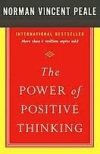This is the second post in a series about positive thinking – where it came from, what’s useful, what’s harmful and how to incorporate it into your life.
Part 2
Positive Thinking Gets Scientific
In the early 1900s, Walter Cannon was holed up with some cats in a Harvard laboratory. He was watching barium move through their system to investigate digestion. He began to notice that cats that were agitated had slower digestion than his other laid back cats.
Sort of this cat:

Not a happy camper!
photo credit: Ella Mullins via photopin cc
versus this cat:
This was curious, so an experiment was designed. Cannon exposed half of his cats to dogs who entered the lab to bark and growl at the cages (animal experiments make this vegan sad). The other half of the cats he kept calm. Once everyone was sufficiently frightened and lazy respectively, he drew blood from all of the cats. He noticed that the frightened cats had elevated levels of adrenaline known at the time to raise blood pressure, increase blood sugar, dilate pupils and, low and behold, slow digestion. In 1936, Cannon presented his findings and introduced us to the term ‘fight or flight.’ This was the first scientific study that started looking at how stress impacts the body.
Now we have mind-body ideas swirling in the new thought spiritual movement and in the laboratory, but both stayed on the fringe of society until one book changed everything.
An Ap-PEALE-ing Approach
Norman Vincent Peale was a fan of both the new thought movement and the research concerning stress coming out of Harvard. In 1952, he put these ideas together in the runaway hit, The Power of Positive Thinking, which inspired a generation and sold over 20 million copies. The book’s popularity came from the mainstream appeal of Peale. He was a Christian pastor and the founder of Guideposts Magazine who was personally close to the Nixon family. While many of the ideas in The Power of Positive Thinking were new, and in some ways, very different from traditional religion, Peale was a public figure that inspired trust.
The tenant of the book is that negative emotions cause stress and stress causes illness. He conjectured that positive thinking could shift emotions and decrease stress to create healing – in any area of life: physical, financial, spiritual, relationships, etc…
Now spirituality and science have collided to introduce positive thinking to the mainstream public; however, the medical community won’t take notice until 20 years later.
The next post will cover how the medical community came to take interest in positive thinking and what beliefs we ended up with as a result. Stay tuned…
Looking for practical ways to use the mind-body connection? Check out
Chronic Resilience: 10 Sanity-Saving Strategies for Women Coping with the Stress of Illness.
“I highly recommend this groundbreaking book!”
-Kris Carr, NY Times Bestselling Author

